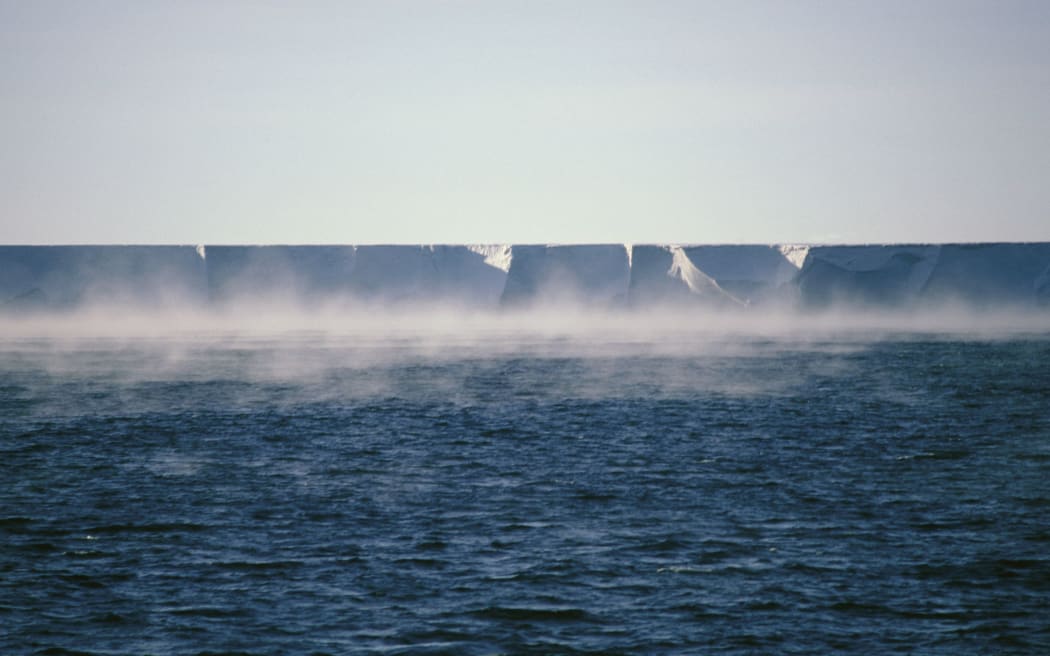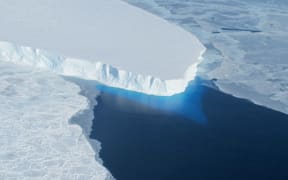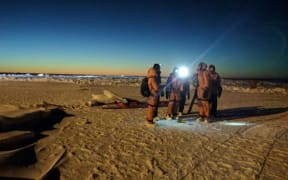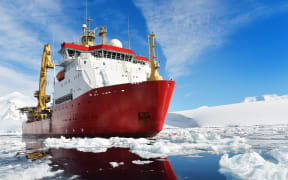A team of New Zealand scientists is preparing for an important mission to Antarctica, to try to understand whether its largest ice shelf is melting into the ocean beneath it.
They're taking a special hot water drill to bore through the centre of the Ross Ice Shelf, which is several hundred metres thick.

Frost smoke rises from the sea off the Ross Ice Shelf in Antarctica. Photo: SCIENCE PHOTO LIBRARY
The shelf is as big as France and the water beneath it is about the same volume as the North Sea.
In October, a interdisciplinary team of scientists will converge on this expanse of ice 350km from Scott Base and set up camp for two months to conduct a range of scientific experiments.
Glaciologist Christina Hulbe said the ocean beneath the shelf was largely unstudied.
"We know that this part of Antarctica has changed in the past, when the climate has warmed and we know it's going to change in the future," she said.
"What we don't know is how fast it happens and what it looks like when it happens. We want to try to understand the vulnerability of the Ross Ice Shelf to future warming."
Dr Hulbe said the team would use a hot water drill built at Victoria University, and bore through 350m of ice to collect samples from the ocean and the sea floor.
She said if the ocean had warmed beneath the Ross Ice Shelf then that warmer water could enter west Antarctica, which past climate records showed had contributed to ice melt, so it was important to understand how the ice shelves worked.
The project's focus was very different to the Andrill project, which involved scientists from seven countries using a drilling rig to bore beneath ice at the edge of the shelf for rock and sediment samples that were 45 million years old, she said.
"We don't know what we're going to find but it's really important for trying to understand how the ice shelf is going to respond to future change, because the pathway is the ocean, so if we don't know what's going on right now, it makes it hard to think about what will happen in the future."
The hot water drilling would provide direct access to the ocean, the sea floor and the interior of the floating ice.
Scientists would drill an initial borehole to install an 'ice shelf observatory' and deploy a permanent oceanographic mooring to monitor water conditions after the team had left the site, she said.
A second borehole would then be drilled a few hundred metres away and a remote-operated underwater vehicle would investigate the area, and sediment samples would be taken from the sea floor.
Ice cores would also be extracted from the side of the borehole, she said.
NIWA oceanographer Craig Stevens said future climate projections largely depended on the longevity of ice shelves.
"This is all things we've really only been able to sample in the last few decades.
"We're on a really steep learning curve and there's kind of a sense of urgency over the next decade to work out what sort of future we're in for."
He said the last time a similar project was carried out on the Ross Ice Shelf was in the 1970s, and it was important to see what had changed using improved technology.
But he expected the team would come away with more questions than answers.
Fellow oceanographer Natalie Robinson said while Arctic sea ice in the north was melting, Antarctic sea ice had been gradually expanding.
She said there were a number of reasons behind it, but one largely unexplored area was how melting glacial ice from underneath ice shelves might flow out into the ocean and form sea ice.
"It's a trade-off isn't it, because if this mechanism is happening then it means we are melting that glacial ice that is the backstop for the ice coming off the continent."
Dr Robinson said the Antarctic sea ice was like the heartbeat of the global ocean, keeping the oceans circulating, and delivering nutrients from the surface into the deep ocean.
The scientists said they expected to start delivering the first results from their trip as soon as they returned, although it would take several years to comprehend the full picture of their discoveries.





